BACK TO WEATHER-BLOG MENU
New! Fine Art Prints & digital images for sale-
Welsh Weather & Dyfi Valley landscapes Slide-Library - Click HERE
Finally, in early September, the mackerel which had hardly been seen all summer, returned. There has been much speculation as to why they have been so scarce on the Welsh coast up until then: possibly the storms played so much havoc with the inshore sandbanks where the baitfish like sandeels live. Another interesting possibility is that they are extending their range northwards: this year they were present in great abundance in Icelandic waters. There was an early run of them back in the spring but they seemed to migrate straight through without, in the main, hanging around.
Having heard some reports of catches, I went up to Porth Iago on the Llyn Peninsula on September 8th, to fish this riptide that develops where the flood has to force itself between a headland and an offshore reef, part of which is above the water forming a guano-caked small island. The predators feed hard here as the baitfish are swept along in the tide...
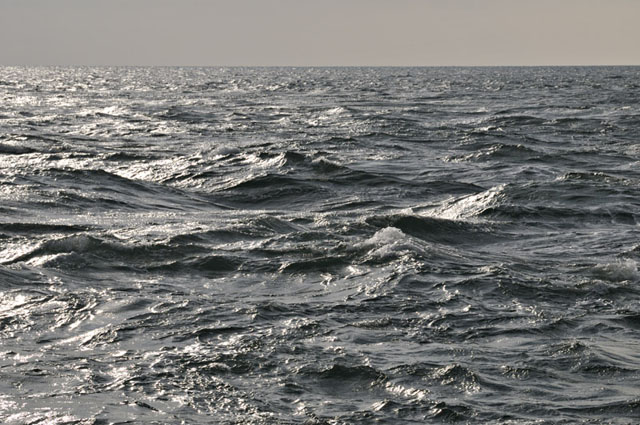
...it didn't take long to get what I was after. Enough for a good feed and a stocked-up freezer...
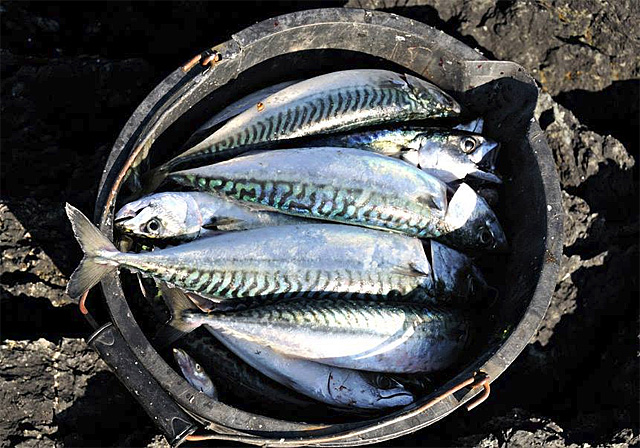
Further out to sea, the water would at times boil as the dolphins also tore into the mackerel, working as a team to baitball the shoals then tearing through them. Always an amazing sight.
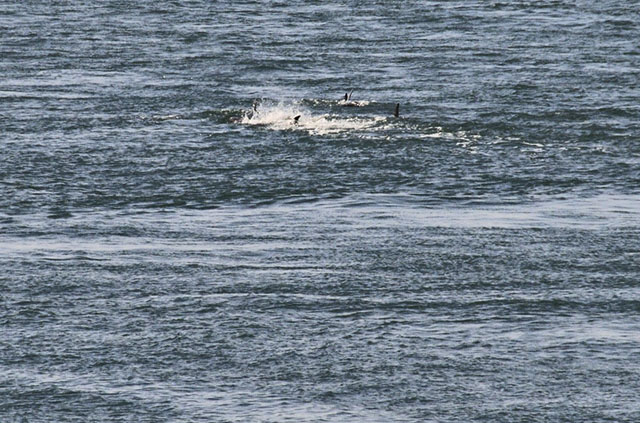
The sun has been seriously active of late with one large sunspot after another at times, though no aurora this far south - so far. This shot was taken on September 11th: a sunspot is visible just R of centre, with a flight of seabirds bottom R...
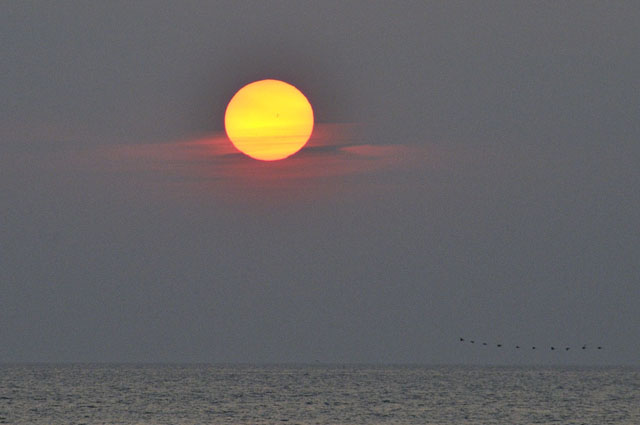
October 8th brought a very unstable SW airstream over the UK and in the afternoon I headed down to Borth to watch the show:
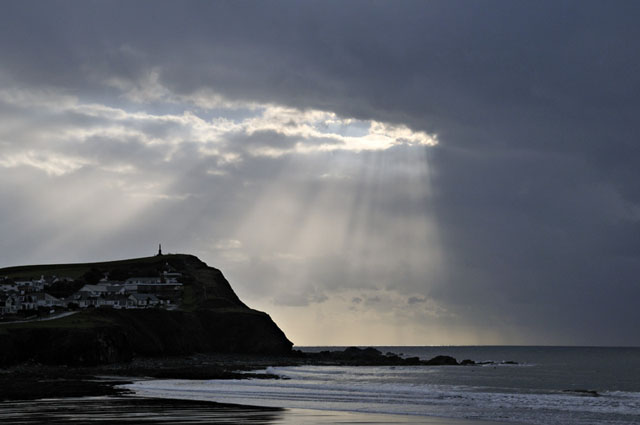
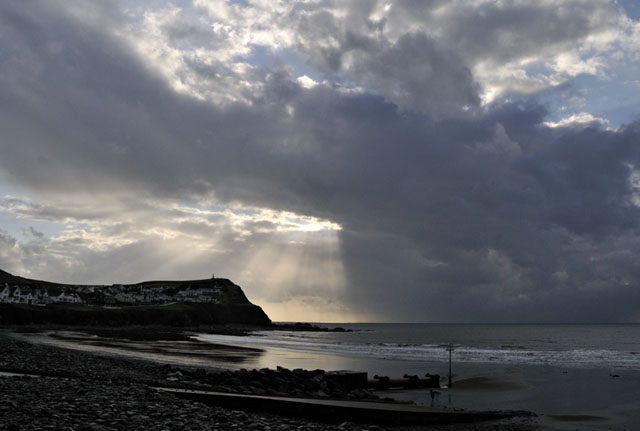
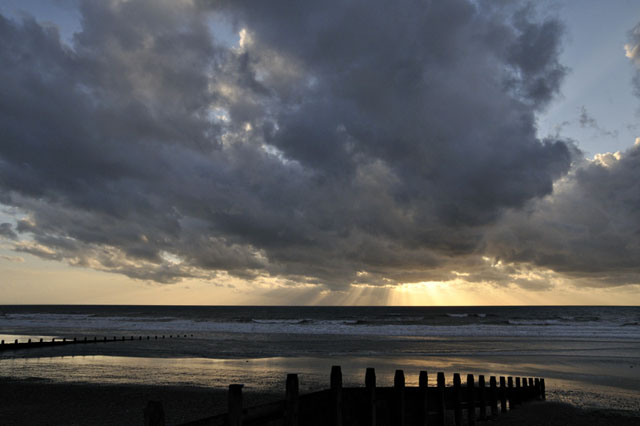
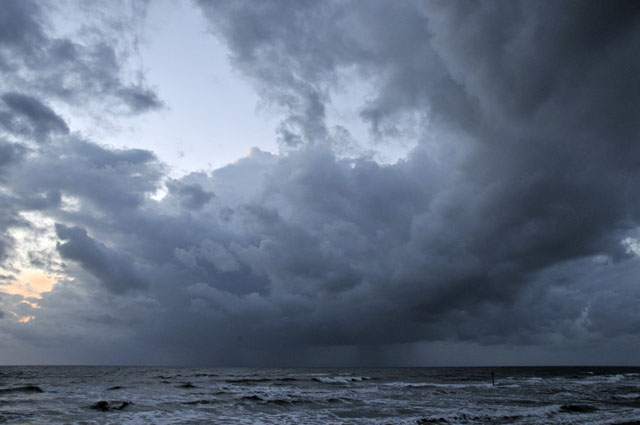
As night fell, intermittent lightning became visible from a number of these storm-cells, which passed one by one to my NW, close enough for loud thunder at times, though it stayed dry where I was. Getting a shot was impossible as each storm was only producing a flash every minute or so, but with half a dozen on the go it was quite a spectacle, so I just sat back and enjoyed the show. I did get the shot below of the Hunter's Moon rising over the Cambrian Mountains....
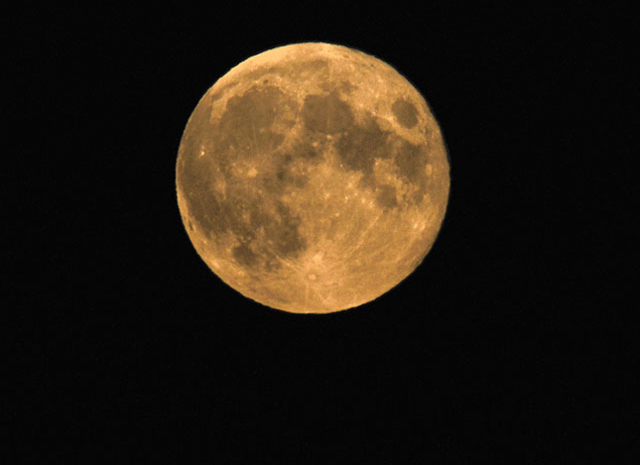
I've been photographing storms for years now and each one has its own uniqueness - the light, the clouds, the rain or hail, always different. My photography attempts to capture as much of this variety as possible. So the following morning, when a particularly intense downpour arrived at home, I did an experimental shoot. What was special about this deluge was that I was right on its edge, so that the early morning sun was shining through it at a low angle. This was the best of the results: the Texture of Rain....
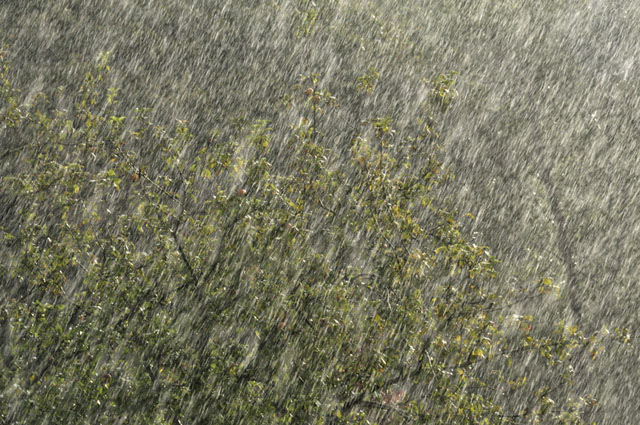
Talking of experiments, having to illustrate, as well as write, a mineralogy text-book - something that has kept me slaving over a hot keyboard a lot this year - I've been trying to develop my macro-photography skills. One particular technique that I've learned recently is image-stacking. Basically, you set the camera up on a tripod, use "live view" mode to get the sample up on your LCD screen and magnify it using the digital zoom function, so that you can see small crystals in clear detail. You then manually focus on the highest part of the crystals, take a photograph and then focus down a tiny increment at a time, shooting every time you do this, maybe taking half a dozen shots altogether. You then get the images, name them in running order and drop them into a neat bit of freeware called Combine ZP, which after several minutes of analysis combines all the in-focus areas it can find into a single image. The image below is a spray of blue crystals of linarite, a basic lead-copper sulphate from one of the local disused lead mines. The longest crystal is just 4.5mm in length!
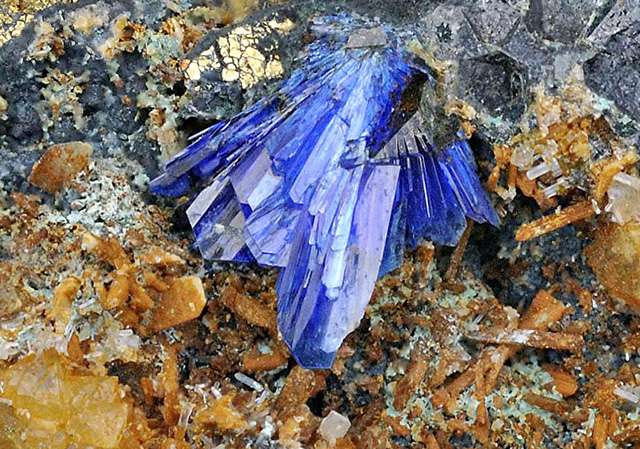
This is another lead-copper sulphate, but a much rarer one - elyite.This sheaf of violet crystals is less than 2mm across. Fantastic bit of freeware, that!
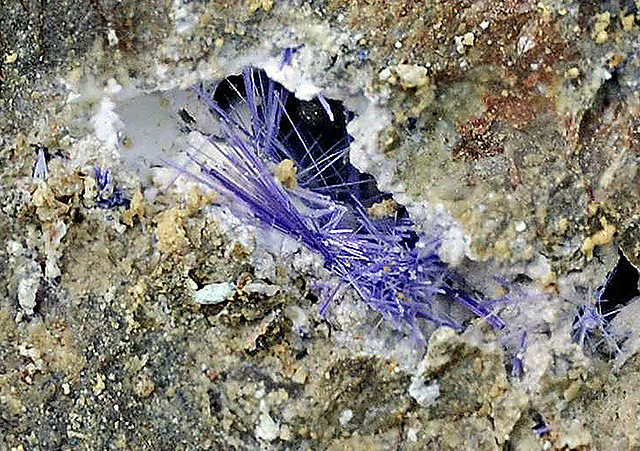
Autumn is also a happy hunting time, but this year's very dry September had a marked effect, with only the dampest of woodlands producing anything. The camera always comes along - there's such an incredible variety of colour and texture in the fungal world...
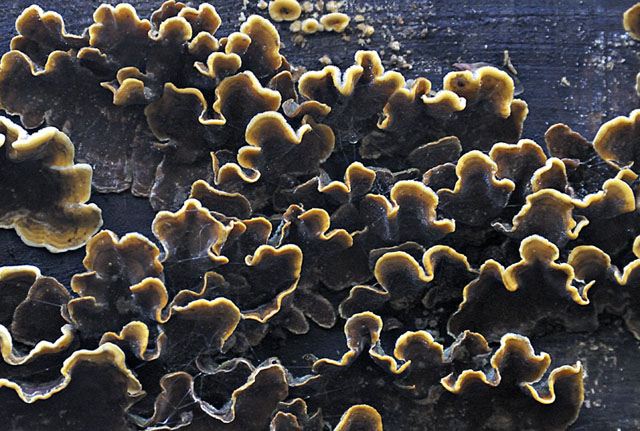
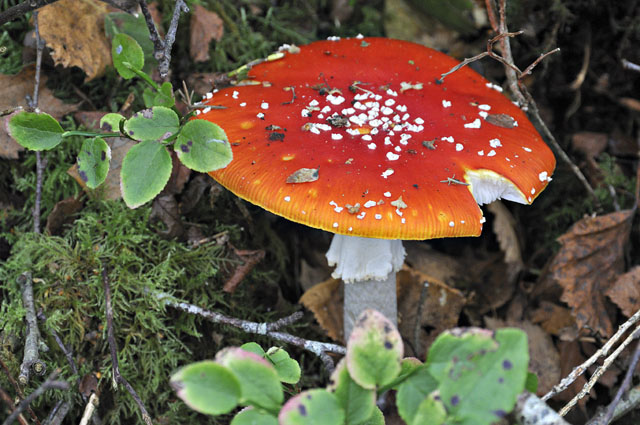
With a fair bit of effort, a steady supply of chanterelles has been possible...
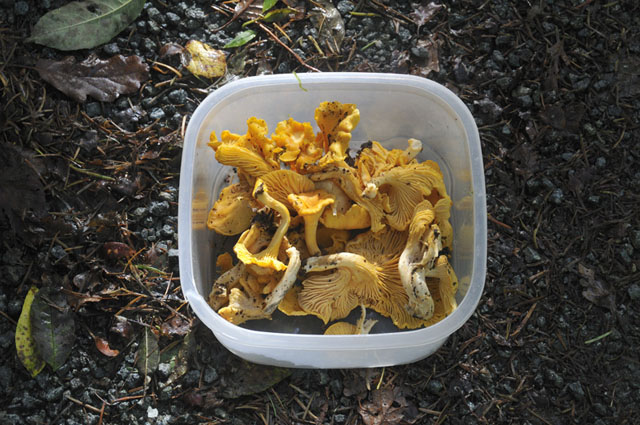
Plus, even more tasty, the very distinctive white hedgehog-fungus, with which the most delicious carbonara can be made! Even in a basic pasta mix with bacon, shallots, green beans and cream it is awesome.
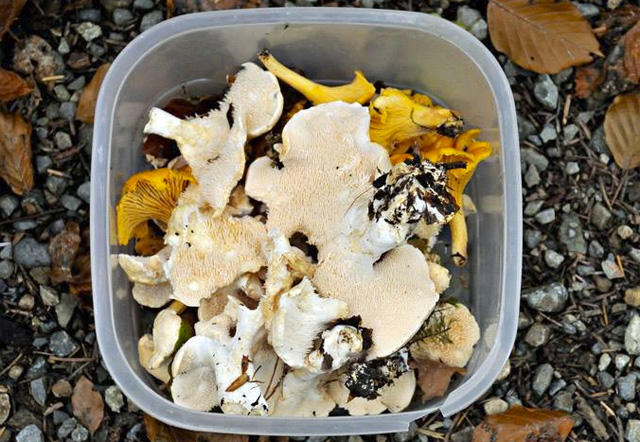
It's also the season where night-fishing for codling and whiting commences, which means some impressive sunsets are on the cards to distract the angler waiting for a bite (the fish tend to come on the feed once it's dark). This set was at Tywyn on October 12th:
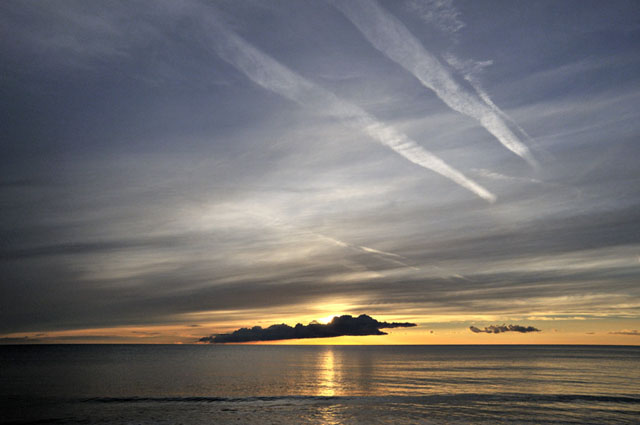
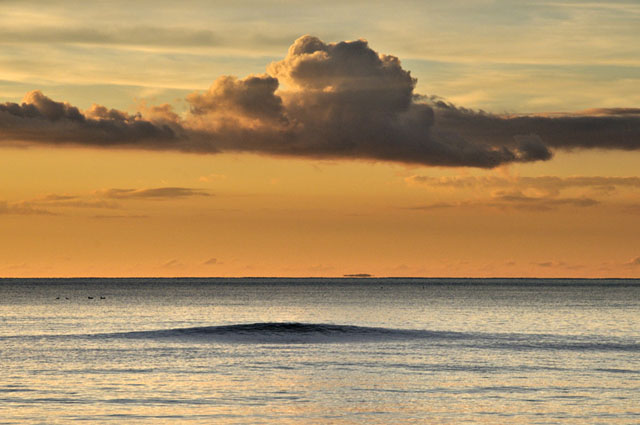
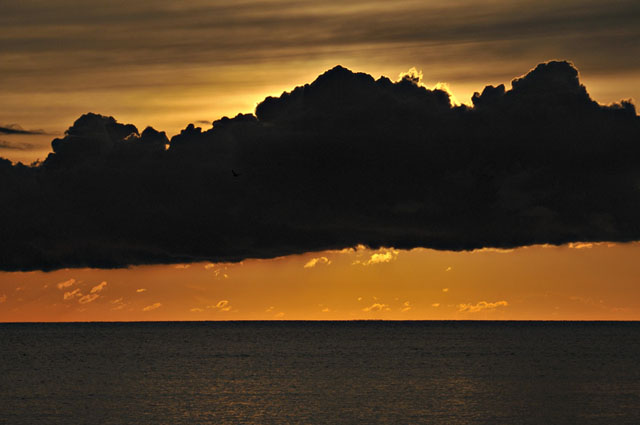
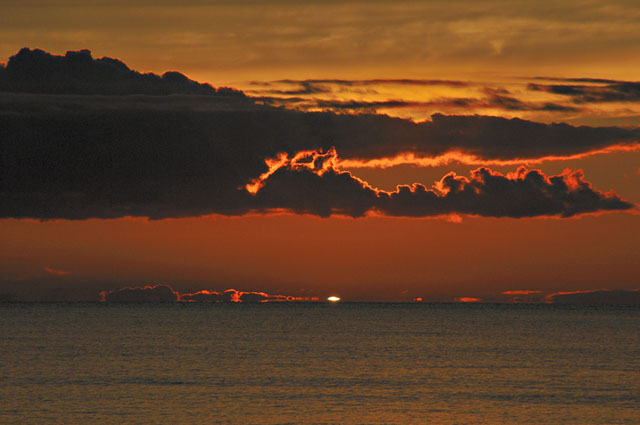
In the above shot, I've finally managed to capture the elusive "green flash" as the sun disappears over the horizon, something I've been trying to accomplish for a fair old time. The three below are a burst of shots showing its evolution:
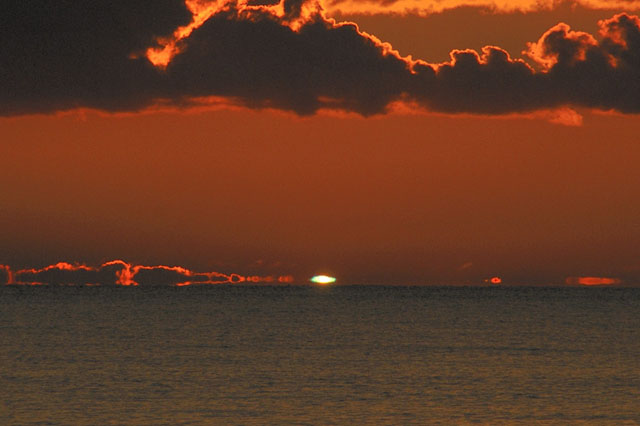
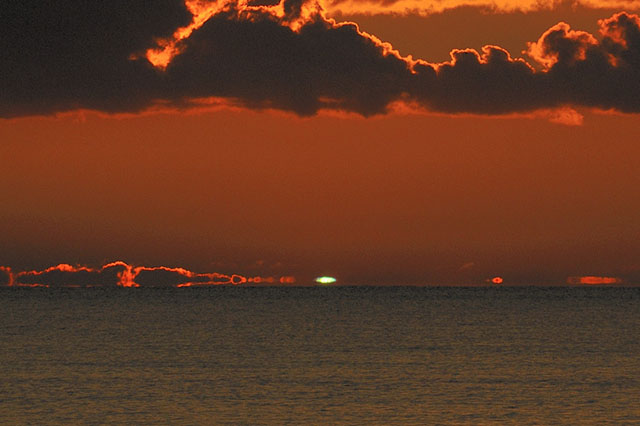
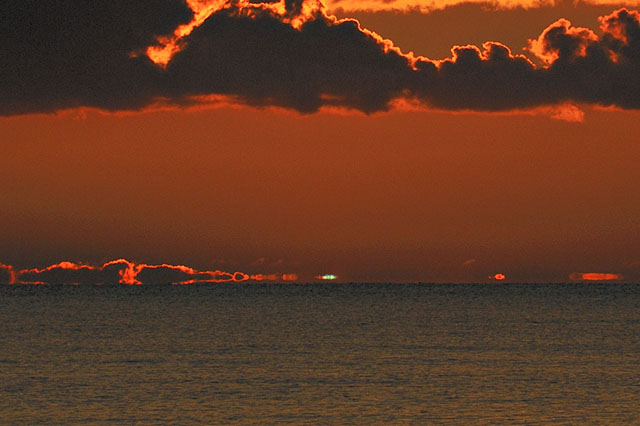
According to: http://mintaka.sdsu.edu/GF/explain/explain.html:
"Green flashes are by-products of the large variations in astronomical refraction near the horizon. Although there are several kinds of green flash, almost every kind is a by-product of a corresponding mirage. All the common forms are magnified images of the green rim produced by dispersion in the bulk of the atmosphere. The rim is too narrow to be seen without magnification, but sufficient magnification can be produced by mirages of various kinds."
The treat continued for a while:
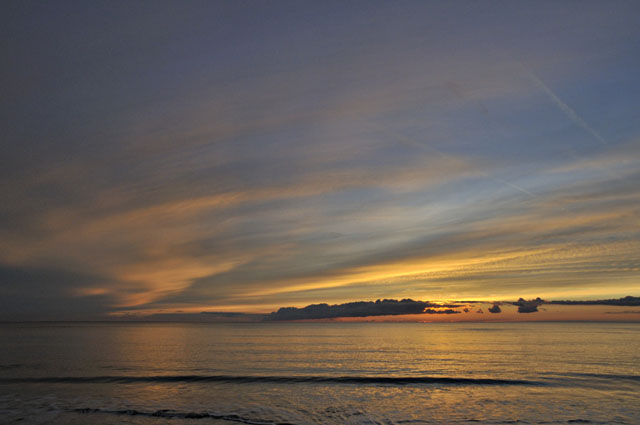
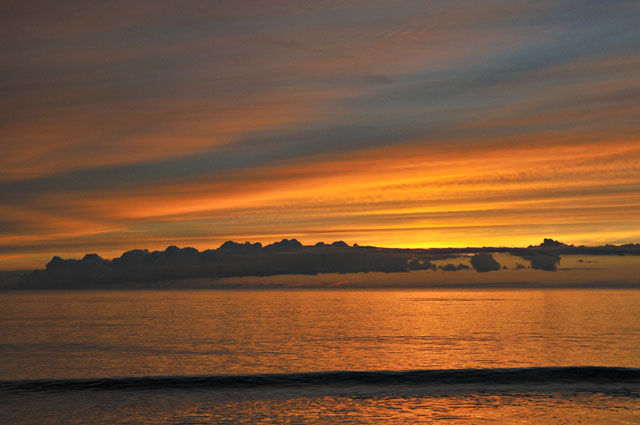
More experimental photography, taking advantage of living in an area free from light-pollution. This will need a lot more practice, but it's an interesting challenge - taken early on the morning of October 28th:
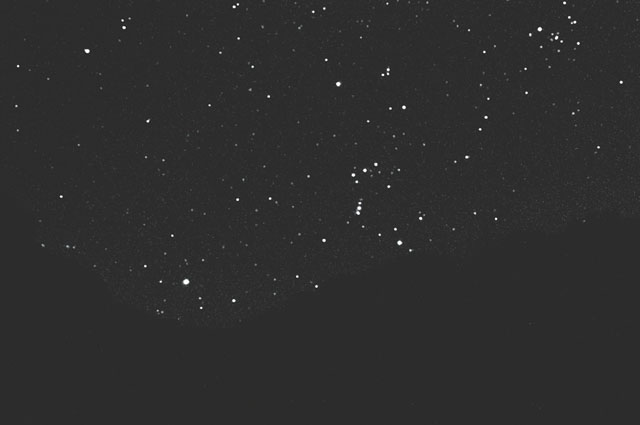
It was worth getting up early for the sunrise!
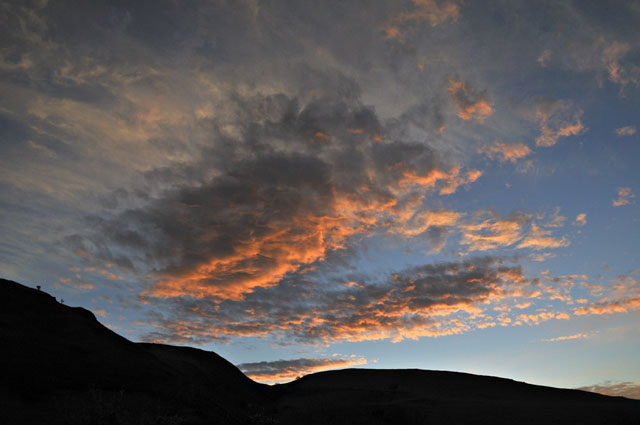
This whole post seems to be about texture and light-patterns. Perhaps this is a natural reaction to the darkness that overshadowed the lives of the remaining members of my family over last winter and has stayed with us all ever since, coming and going seemingly at random. Major bereavements are a lot more complicated than I realised. I seem to be looking more for colour and beauty than dark storm-clouds right now.
Talking of such things, onto the positively balmy Halloween, when temperatures got up to over 20C in the valley. I had volunteered as the steward with a camera, so I followed the front of the procession before setting up in the fireworks field once everything was safely in place. The procession was its usual colourful self:
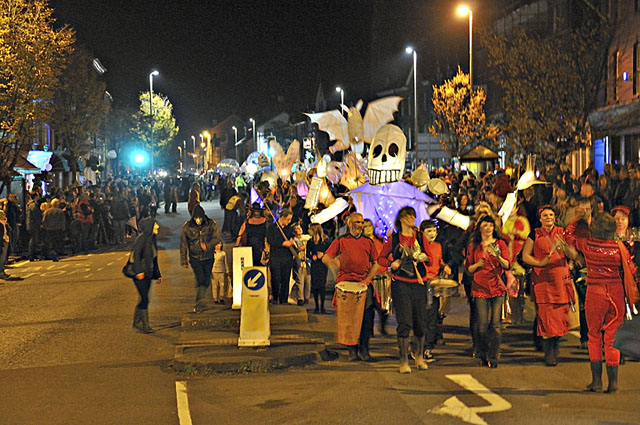
Working entirely in manual mode, with the camera in "bulb" setting secured to a heavy tripod and with an ultrawide lens on the business end, I worked away, varying exposure time again experimentally. The results were varied - the one thing to do when shooting fireworks is keep at it because predicting where the starbursts will exactly occur is impossible. You will get some and miss some - it's a fact of life. Here are some that I liked:
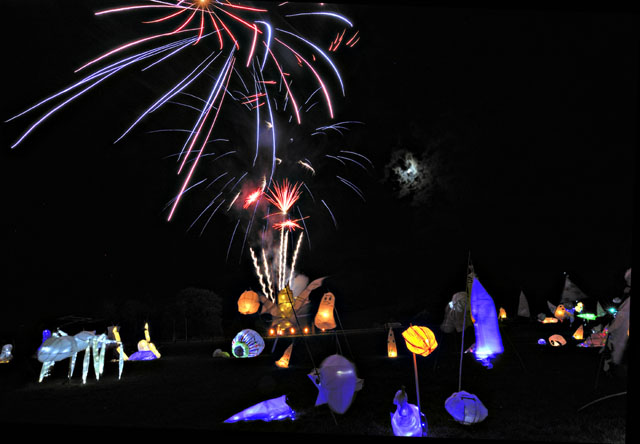
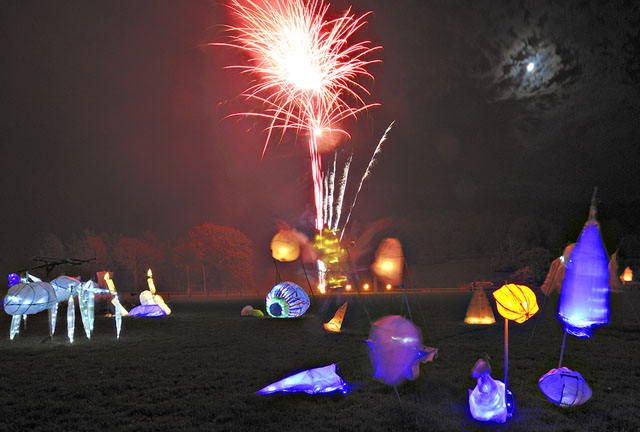
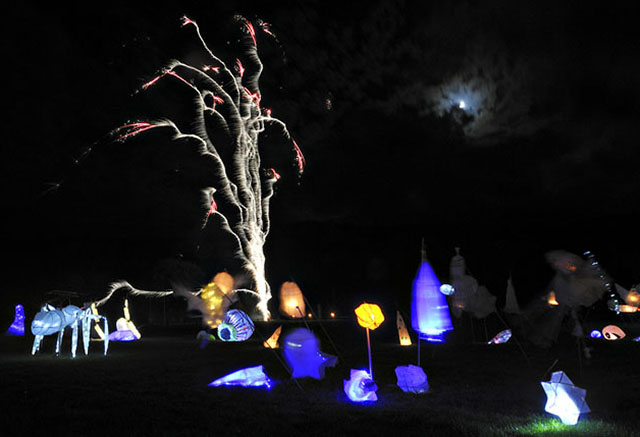
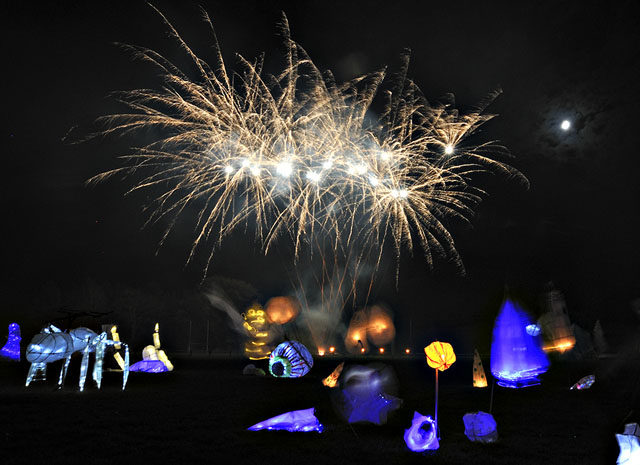
This was my favourite although it was a pity that by then the spider-lantern had started to blow over. Gusty winds rose, buffeting the field, in advance of a cold front that had the organisers worried in case it arrived early to spoil things. The display started just before 8pm; that afternoon the Met Office forecast model gave the rain an ETA of 9pm: it arrived at three minutes to nine and within minutes it was chucking it down. But we were back in the pub by then, so that wasn't so bad!
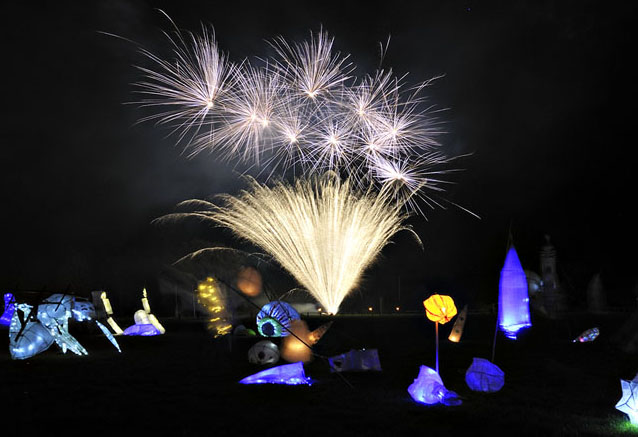
With winter on the way, I note that the Daily Express are back into snow-apocalypse mode. This has become just as seasonal as finding chanterelles and fishing for whiting! Looks pretty unsettled at times as we head into mid-November, but further ahead than that - who knows? More soon!
BACK TO WEATHER-BLOG MENU
New! Fine Art Prints & digital images for sale-
Welsh Weather & Dyfi Valley landscapes Slide-Library - Click HERE